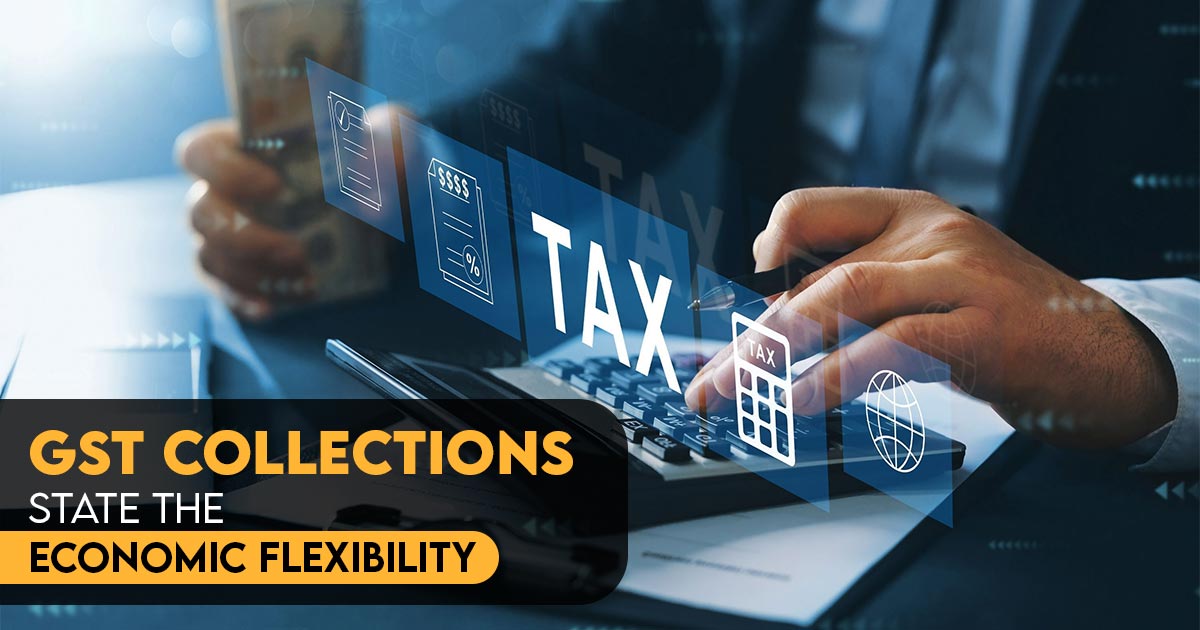
In October 2023, India recorded gross GST collections of Rs 1.72 lakh crore, marking a 13.4% rise from the previous year. Over the six years since its inception, the New GST system has notably enhanced tax buoyancy, streamlined logistics, improved tax administration, and fostered increased formalization, among other benefits.
Consistent growth in tax collections is positive for fiscal stability, signalling economic resilience and a stronger formalized economy amid global macroeconomic and geopolitical uncertainties.
The fiscal year has seen gross GST collections totalling Rs 1.66 lakh crore, marking an 11.4% increase from the Rs 1.49 lakh crore recorded between April and October last year.
Growth has moderated compared to the recovery witnessed in the past two years following the Covid-19 pandemic shock. Over the period since FY19, overall GST growth has maintained a Compound Annual Growth Rate (CAGR) of approximately 11%, surpassing the nominal GDP growth of around 9.5% during the same period impacted by the pandemic.
The consistent tax rates signify a rising level of formalization within the economy. India previously dealt with multiple indirect taxes pre-goods and Service Taxes, posing challenges in tax administration.
The move to unify and centralize taxes on goods and services aimed to alleviate the compliance burden on taxpayers and streamline tax administration.
The launch of GST aimed to realize the vision of “One Nation, One Tax.” Its implementation has played a pivotal role in formalizing the economy and enhancing transparency, discouraging entities from operating outside the tax ambit.
The GST Council meeting, overseeing its governance, represents a distinctive federal structure. The success of GST in bolstering tax adherence and promoting formalization can be attributed to the adoption of advanced technologies.
Extensive technological integration and reporting mandates within GST have led to increased tax compliance and broadened the overall tax base. Furthermore, efforts have been made to integrate newer technological advancements, including Data Analytics, Artificial Intelligence, and technologies like Radio Frequency Identification (RFID) Tags, alongside the e-way bill system.
Boosting revenue by efficiently combating fake GST Invoices stands out as a significant factor. Measures were taken to establish a system for early identification of suspected entities and prompt detection of GST fraud.
The surge in tax collections in October 2023 can be largely attributed to intensified actions such as increased notices, anti-evasion campaigns, and enhanced investigations by the tax authorities.
Additionally, ongoing efforts by the GST Council to analyze data, rectify inverted structures, and address tax loopholes have contributed to this increase.
The standardized rates have incentivized businesses to align with the tax system, while consistent reforms aimed at enhancing the GST framework have led to a rise in GST registrants and improved tax filing rates.
In recent years, GST has undergone significant changes in policies, tax rates, procedures, and technological advancements. Ongoing endeavours to mitigate tax evasion within the system have yielded positive outcomes, promising a favourable outlook for the economy.
Despite global challenges, India’s growth has displayed commendable resilience, as evidenced by steady growth in high-frequency indicators. Consequently, Goods and Service Tax collections are expected to remain robust.
The unified effort to address system challenges federally signifies structural resilience within the economy.